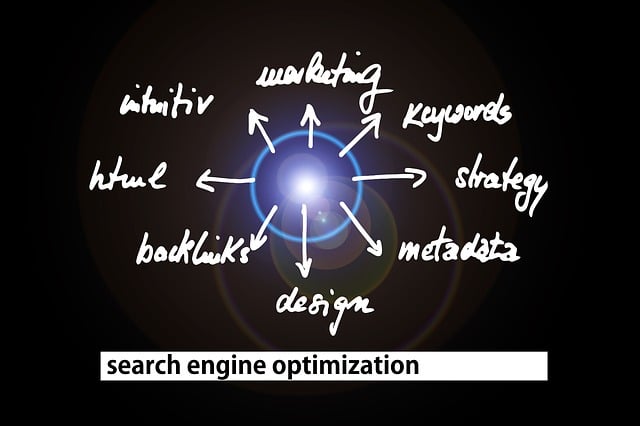Keyword research and optimization are vital for search engine optimization (SEO), focusing on understanding user intent and identifying relevant terms to create content that resonates with audiences. This process involves using tools like Google Ads, SEMrush, Ahrefs, and Moz to uncover high-value keywords, assess search volume, evaluate competition, and inform content creation, metadata optimization, and link-building strategies. The goal is to drive organic traffic and improve search rankings by aligning content with user needs. Regular audits and updates are essential in today's dynamic digital landscape. Measuring success through tracking keyword rankings and website traffic provides valuable insights for data-driven decision-making.
In today’s digital landscape, effective Keyword Research and Optimization is vital for any website’s success. This comprehensive guide explores the art of enhancing SEO through strategic keyword selection. We’ll navigate keyword research, understanding search behaviors, and leveraging powerful tools. From optimizing on-page elements to building compelling content, each step ensures your site resonates with the target audience. Additionally, we’ll uncover off-page tactics and emphasize the importance of regular audits for sustained success, ultimately driving traffic and boosting rankings.
Understanding Keyword Research: The Foundation of SEO

Keyword research is a fundamental aspect of search engine optimization (SEO) that involves understanding user intent and identifying relevant terms to optimize content for search engines. It’s the process of uncovering the keywords and phrases your target audience uses when searching for products, services, or information related to your business. By conducting thorough keyword research, you can uncover valuable insights into consumer behavior, identify long-tail keywords with less competition, and align your content strategy with what your audience truly seeks.
This initial step serves as the foundation for effective SEO by ensuring that your website’s content is optimized around terms that drive organic traffic and improve search engine rankings. It involves a combination of tools, techniques, and analysis to uncover high-value keywords, assess their search volume, and evaluate competition. With this data, you can make informed decisions about which keywords to target in your content creation, metadata optimization, and link-building strategies, ultimately enhancing your website’s visibility and attracting the right audience.
Identifying Target Audience and Their Search Behaviors

Understanding your target audience is a cornerstone in any successful SEO strategy. By identifying who your ideal customers are and how they search, you can tailor your content to meet their specific needs and preferences. Keyword research plays a pivotal role here, as it helps uncover the terms and phrases your audience uses when looking for products or services similar to yours. Tools like Google Ads Keyword Planner or SEMrush can assist in this process by providing insights into search volumes, competition, and related keywords.
This knowledge allows you to optimize your content effectively. Incorporating relevant keywords naturally within your text, from titles and headings to meta descriptions and body copy, signals to search engines that your content is relevant to a particular query. It’s not just about using the right words but also understanding the intent behind them—whether informational, navigational, or transactional—to ensure your content provides value and satisfies user expectations.
Uncovering Relevant Keywords: Tools and Techniques

Uncovering relevant keywords is a critical step in any successful SEO strategy. Keyword research tools like Google Ads Keyword Planner, SEMrush, Ahrefs, and Moz are essential for identifying high-volume, low-competition search terms that align with your content. These tools provide insights into search trends, competition levels, and related keyword suggestions, helping you pinpoint the most effective keywords to target.
Beyond these tools, employing techniques such as analyzing competitor backlink profiles, exploring relevant forums and industry discussions, and studying user search queries through Google Search Console or Analytics can offer valuable insights. Considering long-tail keywords, which are more specific and less competitive, can also enhance your SEO efforts. By combining these strategies, you can uncover a robust set of keywords that drive organic traffic and improve content optimization for both users and search engines.
Analyzing Competition for Chosen Keywords

Analyzing competition is a crucial step in any successful keyword research and optimization strategy. By understanding who your competitors are targeting, you can gain valuable insights into the search landscape. Tools like Google Keyword Planner or SEMrush allow you to compare keyword performance across different websites in your niche. This process helps identify high-value keywords that may be feasible for your business to rank for while avoiding heavily saturated terms.
When analyzing competition, look at the top-ranking sites for target keywords. Their content strategies, backlink profiles, and on-page optimization techniques can offer lessons learned and inspiration. It’s also beneficial to assess the level of difficulty associated with each keyword. Some keywords may have low competition but high search volume, indicating an opportunity to capture a significant share of that traffic. Conversely, highly competitive keywords might require more resources and time for effective optimization.
Optimizing On-Page Elements: Keyword Placement Strategies

Optimizing on-page elements is a crucial step in enhancing your search engine rankings, and keyword placement plays a pivotal role here. When conducting Keyword Research and Optimization, it’s essential to strategize where your target keywords should appear. This includes incorporating them into essential sections such as titles, headings (H1, H2, etc.), meta descriptions, and URL structures. Each of these elements contributes to both user experience and search engine understanding of your page content.
For instance, using a keyword in the title not only makes it more visible to users but also signals to search engines what the page is about. Similarly, optimizing headings with relevant keywords helps organize content logically, making it easier for both search algorithms and readers to navigate. Effective placement ensures that your keywords are seen as integral parts of your web page’s structure, thereby increasing its relevance and visibility in search results.
Building High-Quality Content Around Keywords

Creating content that revolves around targeted keywords is a fundamental strategy in SEO optimization. It involves a meticulous process where keyword research plays a pivotal role. By identifying relevant and high-volume keywords, content creators can ensure their work resonates with search engine algorithms and appeals to the intended audience. This approach allows for the seamless integration of keywords into various content formats, such as blog posts, articles, and website copy.
High-quality content built around keywords should offer in-depth insights, unique perspectives, and valuable information. It must address user intent and provide solutions or answers to common queries related to the chosen keywords. This strategy not only boosts search engine rankings but also fosters a positive user experience, encouraging longer engagement durations and lower bounce rates.
Leveraging Off-Page Optimization for Keyword Boost

Off-page optimization is a powerful tool in the SEO arsenal, playing a pivotal role in enhancing keyword research and optimization efforts. This strategy focuses on actions taken outside your website to influence search engine rankings. By building high-quality backlinks from reputable sources, you can significantly boost your website’s authority and visibility. Search engines like Google consider these backlinks as votes of confidence, indicating that your content is valuable and trustworthy.
Effective off-page optimization involves engaging in strategies such as guest blogging, where contributing insightful articles to popular industry blogs can attract relevant backlinks. Additionally, social media engagement, including sharing quality content and interacting with influencers, can indirectly impact SEO by increasing website exposure and potentially driving referral traffic, which search engines favor.
Regularly Auditing and Updating Your SEO Strategy

Regularly auditing and updating your SEO strategy is paramount in the dynamic digital landscape. Keyword research and optimization form the backbone of any successful SEO campaign, but what works today might not be effective tomorrow. The online world evolves rapidly, with new trends emerging and user preferences shifting constantly. Therefore, it’s crucial to periodically reassess your approach.
A thorough audit involves analyzing key performance indicators (KPIs), such as search rankings, organic traffic, bounce rates, and conversion metrics. Identify high-performing keywords and optimize content around them; at the same time, keep an eye on emerging trends and long-tail keywords that offer untapped potential. Regular updates ensure your SEO strategy remains relevant, keeping your website ahead of the curve in search engine results pages (SERPs).
Measuring Success: Tracking Keyword Rankings and Traffic

Measuring success is a vital part of any SEO strategy, especially when it comes to keyword research and optimization. Tracking your keyword rankings and analyzing website traffic provides valuable insights into the effectiveness of your SEO efforts. By utilizing tools that offer real-time data on search engine positions for targeted keywords, you can identify trends and make data-driven decisions.
Regularly monitoring these metrics allows you to understand which keywords are performing well and where improvements are needed. For instance, if a particular keyword ranking has increased over time, it indicates successful optimization. Conversely, low traffic or declining rankings for optimized keywords might signal the need to reevaluate strategies, ensuring your content remains relevant and aligned with search engine algorithms.
